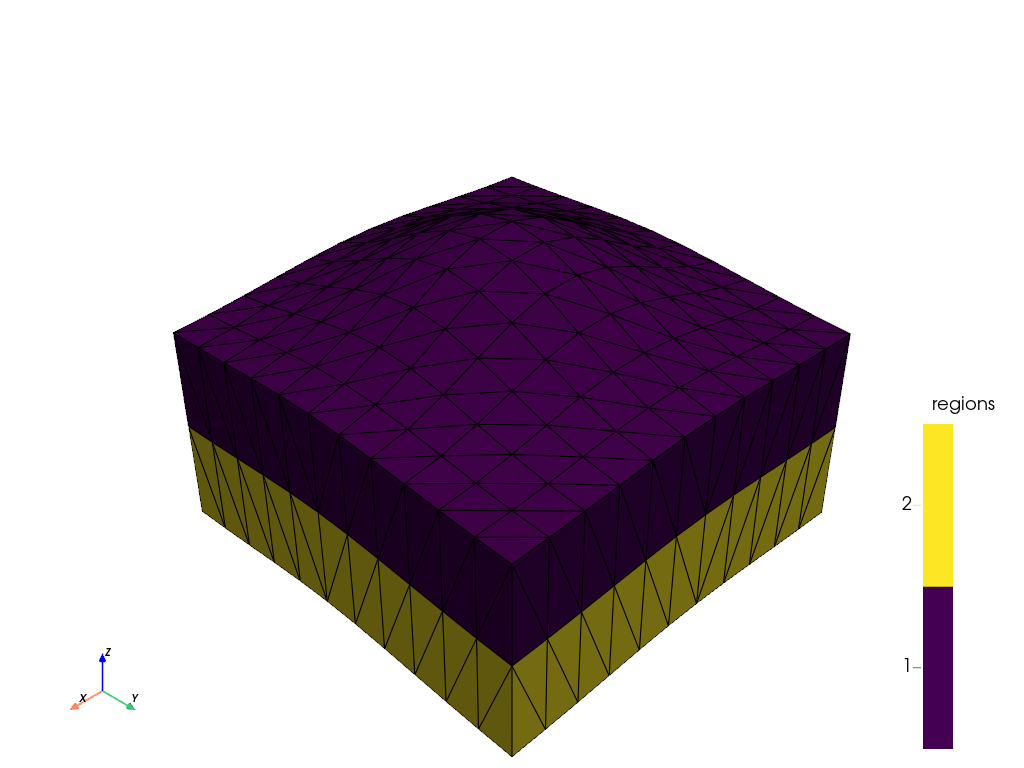Note
Go to the end to download the full example code. or to run this example in your browser via Binder
Creating meshes from pyvista surfaces#
For this example we create meshes from pyvista surfaces. See other examples for different meshing algorithms.
# Define a simple surface
from shutil import which
import ogstools as ot
from ogstools import meshlib as ml
tetgen_present = (
which("tetgen") is not None
) # an optional requirement (needs to be installed on system or via pip)
if tetgen_present:
bounds = (-200, 210, -200, 210)
args = {"bound2D": bounds, "amplitude": 100, "spread": 100, "n": 40}
surface1 = ml.Surface(ml.Gaussian2D(**args, height_offset=0), material_id=0)
surface2 = ml.Surface(
ml.Gaussian2D(**args, height_offset=-100), material_id=1
)
surface3 = ml.Surface(
ml.Gaussian2D(**args, height_offset=-200), material_id=2
)
ls = ml.LayerSet(
[ml.Layer(surface1, surface2), ml.Layer(surface2, surface3)]
)
mesh = ml.to_region_tetraeder(ls, 40).mesh
else:
mesh = None
Visualize the prism mesh
if tetgen_present:
plotter = ot.plot.contourf(mesh, ot.variables.material_id)
plotter.show()

Total running time of the script: (0 minutes 0.783 seconds)

